Dezeen's top four collections from this year's RCA fashion design graduates
Graduate shows 2015: spinning light-up accessories and giant inflatable snakes feature in our design editor Dan Howarth's picks from the 2015 Royal College of Art MA Fashion presentation (+ movie).
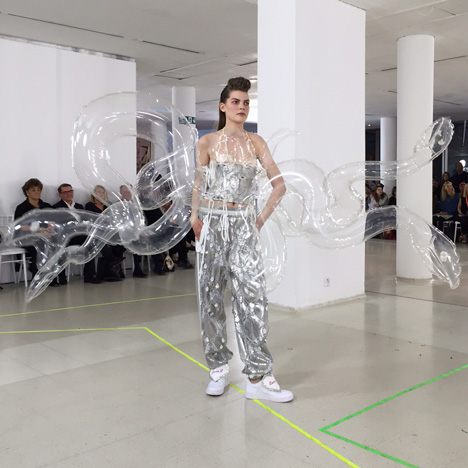
The RCA staged its annual graduate fashion show at its Kensington campus on both Wednesday and Thursday evening this week. Zowie Broach, who took over as head of the MA Fashion course following the retirement of long-standing leader Wendy Dagworthy last year, decided to change the traditional format for her first show.
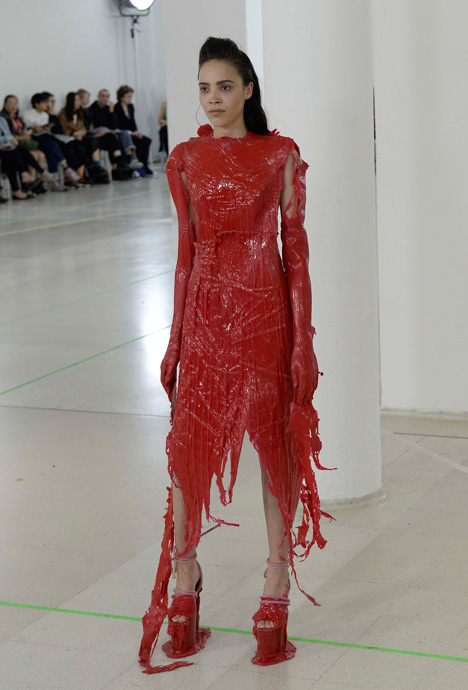
Instead of a typical catwalk presentation with models parading down a straight runway, students were allowed to choreograph their own routines around an open space. This led to a varied range of outcomes during a show that won praise from Vogue's Suzy Menkes and architect Zaha Hadid, who were among the audience.
"I waited to see [the students'] work, their thinking, so I could best understand how to frame and present [it]," Broach told Dezeen.
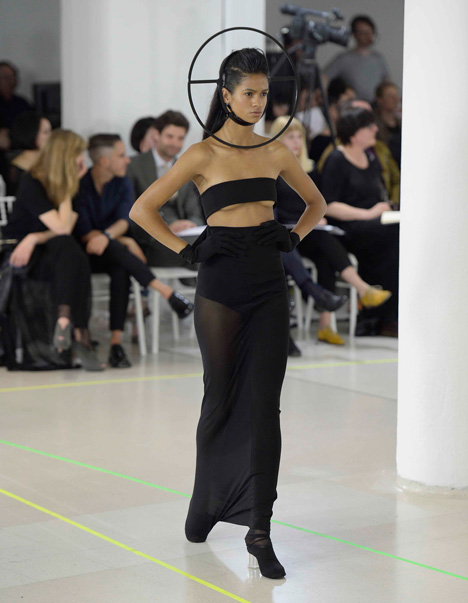
Themes that emerged this year included the use of structural elements, both hard and soft, to embellish outfits and turn them into wearable sculptures.
"Fashion no longer exists alone, it is a portal to a new creative language," said Broach. "It sits with gaming, cars, ecology, political affiliations, landscape, inscape, film and art – so much art."
Here are our top four picks from the 2015 show:
Une Yea
The lights were dimmed for Une Yea's menswear presentation to help show the designer's illuminated mechanical accessories, with spinning propellers that created patterns using built-in LEDs.
"I chose to work with light for the accessories because it produces a shape that can't be touched or felt," Yea told Dezeen. "The propeller on the hats and bags functions at once as ornament and self-protection, if you try to touch it you will hurt yourself."
Created in collaboration with colleague Li Qian, the metal propellers were worn like hats and backpacks or carried like lanterns. The accessories were paired with layered "uncoloured" paper clothes designed to look like mock-ups of garments rather than finished designs.
"I was interested in using paper for the garments because it can never look perfect, it is creased from the outset, and it can't be ironed or straightened back out," said Yea.
Namilia
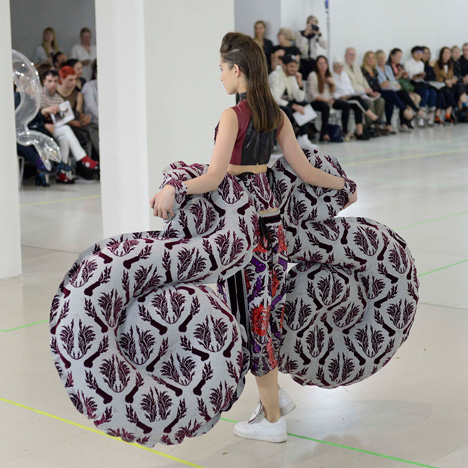
Giant inflatables were used as embellishments for garments by Namilia, a collaboration between students Nan Li and Emilia Pfohl. These took the form of transparent snakes that extended out from either side of sportswear-style outfits, as well as huge blown-up versions of Rococo motifs worn as headdresses and skirt trains.
"The inflatable elements were printed or bonded with manipulated jerseys and printed and embroidered velvets to blend into the garments and to create a larger than life silhouette," Li told Dezeen.
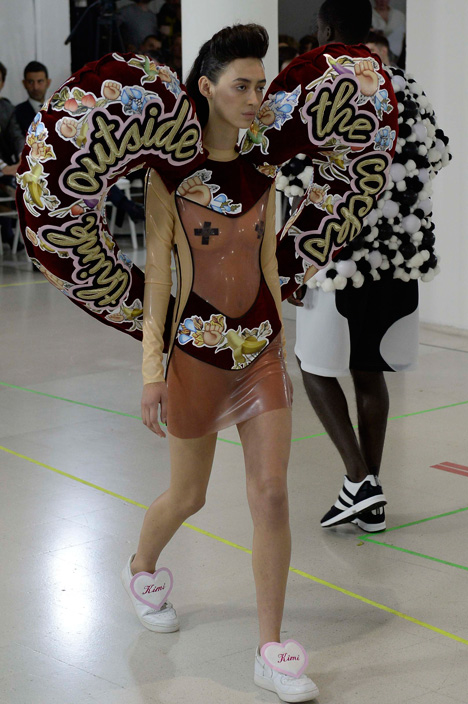
With a tagline that read "My pussy, my choice", the collection also included a bikini top with penis shapes attached to the straps, while a red heart-shaped inflatable was inscribed with the phrase "Think outside the cocks".
"Each outfit in the collection represents an ironic and exaggerated portrayal of one of the female leaders of recent pop culture based on their own approach to femininity," said Li. "Seeing clothing as a visual expression and extension of our minds and bodies, I am working with inflatable elements that extend the physical silhouette and transforms the wearer into their larger-than-life girlhood icon."
Hannah Williams
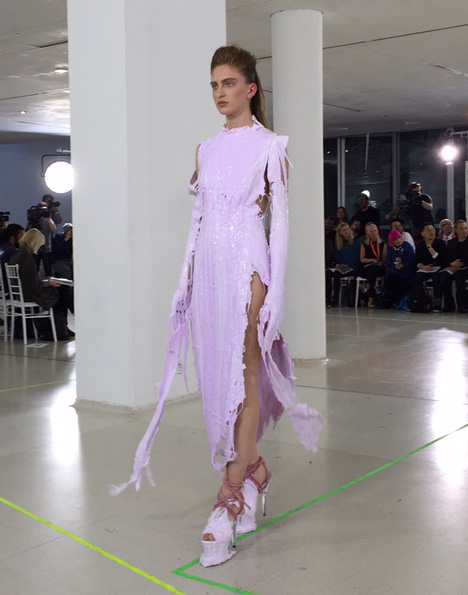
Hannah Williams created her garments by dripping a liquid mixture of silicone, acrylic and plaster onto live models and sculpting the material around their bodies.
"I wanted to work like a sculptor," said Williams, who developed the use of silicone from her BA fashion collection.
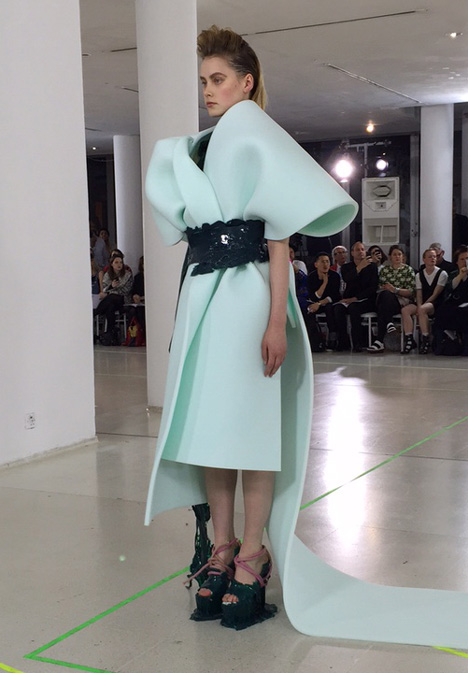
The rubbery material, produced in a range of "candy-like" colours, was also used to produce gloves as well as belts that drew in the voluminous forms of coats created from foam sheets.
"I wanted to change the technique of fashion by not pattern cutting or sewing and directly sculpting garments onto the body creating a different approach to design," Williams told Dezeen.
Fengyi Tan
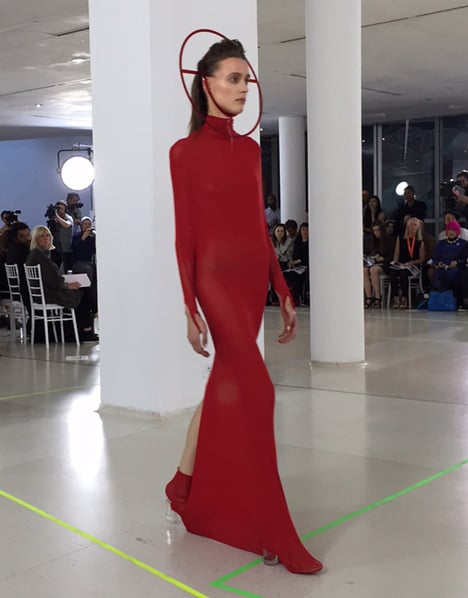
Colourful elasticated dresses restricted the movement of the models wearing Fengyi Tan's collection, which was influenced by contemporary dance.
"It's based on the movement of the body, so I collaborated with a team of dancers and choreographers," the designer said. "After the dances I decided which part of the material to use and the degree of tension that was appropriate."
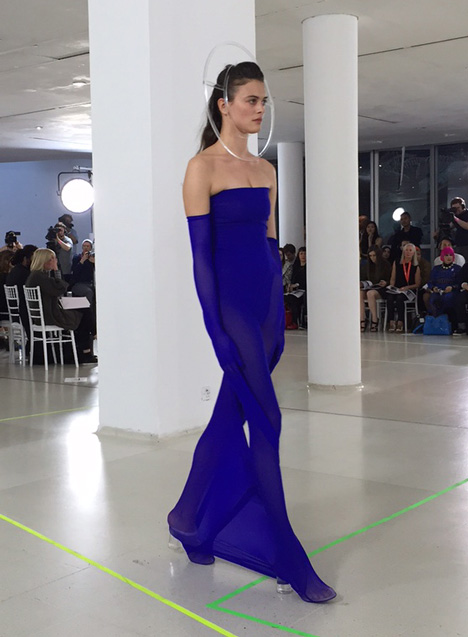
Each slightly translucent, the bright blue, red and black outfits were designed to create impairments. These included hooking the hems around the feet to make it harder to walk and reducing arm movement by integrating sleeves into the main form.
"All my materials have an elastic quality, which can be stretched to a certain extent," Tan told Dezeen. "By layering bonding with other fabric I wanted to create a structural depth in the design, so you can see the form of the body beneath the 'sculpture'."